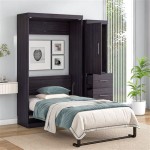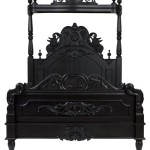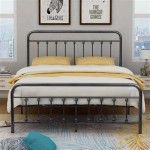Can You Put Two Twin Beds Together To Make a Full Bed?
The idea of combining two twin beds to form a full-sized sleeping surface might seem like a simple solution to a space constraint or a budget-friendly approach to bedding. However, the practicality and suitability of this method depend on several factors. While it's technically feasible to place two twin beds side-by-side, achieving a seamless and comfortable "full bed" experience isn't always straightforward. This article will explore the considerations and challenges associated with joining twin beds to create a full-sized sleep space.
Space and Dimensions
One of the primary considerations is the physical space available. A full-sized bed typically measures 54 inches wide, whereas two twin beds combined would have a total width of 76 inches (38 inches per twin bed). This means that the combined twin beds will occupy a significantly larger footprint than a standard full-sized bed. It's crucial to ensure you have sufficient room to accommodate the increased width, accounting for any necessary clearance for nightstands or other furniture.
The difference in dimensions can also impact the overall feel and functionality. The extra width might seem spacious at first, but it can make it harder to reach across to a partner, especially if you have smaller nightstands or are used to a more intimate sleeping space. The increased expanse can even create the impression of two separate beds rather than a cohesive sleeping surface.
Mattress Compatibility
While it might seem intuitive to simply push two twin beds together, mattress compatibility is an often-overlooked aspect. The height and firmness of the mattresses must align to ensure a smooth and comfortable sleeping surface. If the mattresses have different profiles, a noticeable gap or dip might form between the two beds, causing discomfort and potential back pain. The different firmness levels could also lead to an uneven sleeping experience, with one side feeling softer or firmer than the other.
Additionally, the mattress construction plays a role. Many modern mattresses are designed with specific edge support to prevent sagging or roll-off when someone sleeps near the edge. Joining two twin beds may create a lack of edge support, particularly in the middle section where the two mattresses meet. This can result in sinking, instability, and even increased pressure points, leading to an uncomfortable night's sleep.
Aesthetic Considerations
Beyond functionality, aesthetic considerations can also affect the overall outcome. If the two twin beds have different styles, materials, or colors, the combined look might seem disjointed or clashing. Similarly, the headboards may not align seamlessly, creating an uneven or visually unappealing appearance. Matching bedding sets for both twin beds can help create a cohesive look, but the mismatch in headboards and overall bed frame styles may remain a noticeable feature.
The integration of nightstands is another crucial aspect. If you are planning to use nightstands, you'll need to ensure they are compatible in height and width with the combined twin beds. The placement and size of nightstands can significantly impact the overall aesthetic and functionality of the space. Carefully consider the placement and styling to avoid an overcrowded or cluttered look.
Alternative Solutions
Instead of resorting to joining two twin beds, exploring alternative options might be a more suitable approach. Depending on your needs and budget, you might consider:
- Purchasing a full-sized bed frame and mattress: This is the most straightforward and often the most comfortable solution. It ensures a cohesive sleeping surface with proper edge support and eliminates any compatibility issues between mattresses.
- Investing in a queen-sized bed: If you have the space, a queen-sized bed offers a more spacious sleeping surface than a full-sized bed without sacrificing comfort and functionality. It allows for ample movement space for two people while still maintaining a manageable footprint.
- Exploring modular bed options: Some bed frames are designed with modular components that can be easily adapted to different configurations. These options allow for flexibility and can be adjusted based on your needs and space availability.
While joining two twin beds together might seem tempting, it's essential to weigh the pros and cons carefully. By considering the space, mattress compatibility, aesthetic considerations, and alternative solutions, you can make an informed decision that ensures a comfortable and functional sleeping arrangement.

Twin Beds Perfectly Parallel A Storied Style

Simple Ways To Keep Two Twin Beds Together 7 Steps Guest Room Bed

How To Convert Two Twin Beds A King Shine Your Light

Twin Beds Perfectly Parallel A Storied Style

Simple Ways To Keep Two Twin Beds Together 7 Steps

How To Turn Two Twin Size Mattresses Into A King Mattress Amerisleep

How To Convert Two Twin Beds A King Shine Your Light
How To Convert Twin Xl Mattresses Into A King Sheet Market

Twin Beds Perfectly Parallel A Storied Style

Make Two Beds Into One With Foam Bed Bridges Factory Inc Blog







